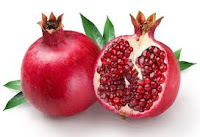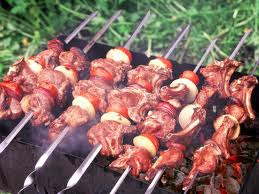Tuesday, March 19, 2013
Tourism in Tajikistan
In tourism section Tajikistan has much to offer to the mountaineer, the hiker
and the independent traveller in search of remote locations and unusual
cultural experiences. There are opportunities for alpine mountaineering, rock
climbing, hiking, horse or camel riding, historical exploration, cultural
experiences or simply relaxing among dramatic mountains and lakes.
Most enticing for the mountaineer are the three giants of
the Pamirs: Peak Somoni, Peak Lenin and Peak Korzhenevskaya. For alpine
climbing, high level walking tours and lakeland scenery the Fann mountains,
just across the border from Samarkand, are especially popular.
The populated valleys have a rich history. In former times,
Tajikistan was at the crossroads of Asia and four major Silk Road routes passed
through the Pamir and Fann mountains.
The mostly visited regions are Dushanbe,the capital city of Tajikistan ,Sughd,the largest city after Dushanbe and Pamir .
Dushanbe : http://www.dis.tj/about/dushanbe.php
Khujand: http://traveltotajikistan.org/cities-of-tajikistan/khujand
Pamir:
The Pamir Mountain range is part of the Western Himalaya and features several peaks over 7000m. The terrain is diverse from towering peaks to high altitude desert plains and climate conditions can vary from +35C to -40C depending upon the time of year. The Pamir Highway follows paths forged long ago by the ancient Silk routes, when that precious commodity travelled from China to European and Arabian markets and traded goods returned in its stead. Legacies of those forgotten times can still be seen with cliff top fortresses and ancient caravanserais.
The highway winds over 2000km from Samarkand in Uzbekistan through Dushanbe (capital of Tajikistan) and the Pamir mountains to Osh in Kyrgyzstan and then on to Bishkek (capital of Kyrgyzstan) through the Tien Shan mountain range.
The peoples of Central Asia hold hospitality as a value of great importance and travellers are warmly welcomed whether the visit is planned or otherwise!
The highway winds over 2000km from Samarkand in Uzbekistan through Dushanbe (capital of Tajikistan) and the Pamir mountains to Osh in Kyrgyzstan and then on to Bishkek (capital of Kyrgyzstan) through the Tien Shan mountain range.
The peoples of Central Asia hold hospitality as a value of great importance and travellers are warmly welcomed whether the visit is planned or otherwise!
The highest peak in Pamir is 7495 ,peak Ismoili Somoni ,this peak is the secind highest peak in the world....
National dresses
Here is a sample of tajik dresses for men and women , these dresses mostly weared while celebrating holidays ,especially Nawruz and daily
Holidays
•The
major holidays in Tajikistan are religious ones such as
Idi sa’idi fitr, Idi
Qurban and Navruz, the
Muslim New Year, which is celebrated at the spring equinox. It marks new life
and new hopes for all who love and celebrate this holiday. Entire villages
prepare for this festival, cooking dishes exclusive to this season – the tables
full to bursting!
•
In Idi saidi fitr and
Idi Qurban an average
family might have seventy to eighty people visiting them a day, not including
the children who come around in the early morning for sweets!
•
Navruz is national
holiday As we know one of the national holidays of our country is Navruz. Every
year from the 21st till 22nd of March
all tajik people celebrate Navruz holiday.
Navruz is one of the oldest
Holiday of Tajikistan. It symbolizes the coming of the spring. We can say that
the nature is wake up from its sleep. From this day the night and day become equal. The word “Navruz” consist of two
Tajik words, which is: ”Nav”-new
and “Ruz”-day. So they means new day. Also from the beginning of Navruz, people
begin their work in farms.
Navruz
is one of the oldest Holiday of Tajikistan. It symbolizes the coming of the
spring. We can say that the nature is wake up from its sleep. From this day the
night and day become equal. The word “Navruz” consist of two tajik words, which
are: ”Nav”-new and “Ruz”-day. So they means new day. Also from the beginning of
Navruz, people begin their work in farms.
The meaning of Navruz: The meaning of Navruz Thus Navruz is the
beginning of the new year, of the new wonderful life, of the new believes and
new happiness. In this year in our town there are a lot of interesting
competitions and measures
Traditions in Navruz: Usually the family celebrate it with
national food which called Sumanak. Sumanak cooks from night till morning. Each member
of the family must combine it no less than ones. Navruz can not be imagined
without Sumanak. What is Sumanak?
Here is a link for how Tajik people meet Nawruz:
http://www.youtube.com/watch?v=L5-fGdP3l-s
Monday, March 18, 2013
Cuisine of Tajikistan
In Tajikistan there are various types of food such:
Mantu/Sambusa: steamed dumplings or pastry filled with meat and/or vegetables
Plov/Palav: rice fried with meat, carrots, and onions
Qurutob/Qurotob: the national (vegetarian) dish is cheese dissolved in water poured over bread then fried and topped with onions
Sikhkabob: grilled mutton, pork, or chicken sometimes served with raw onions, parsley, and/or a vinegar sauce
Bread: the local bread is generally flatbread called non and is served with nearly every meal.
From drinks tea is the most popular drink in Tajikistan and it is difficult to go anywhere without seeing someone with a tea glass in hand. Both green and black teas are popular, but sugar is never used with tea. If you want to try out some more traditional drinks, try kefir, which is a yogurt drink or sherbets, which in Tajikistan are sweet fruit drinks. Other available beverages include juices, soft drinks, and coffee although none are as popular as tea.
Mantu/Sambusa: steamed dumplings or pastry filled with meat and/or vegetables
Plov/Palav: rice fried with meat, carrots, and onions
Qurutob/Qurotob: the national (vegetarian) dish is cheese dissolved in water poured over bread then fried and topped with onions
Sikhkabob: grilled mutton, pork, or chicken sometimes served with raw onions, parsley, and/or a vinegar sauce
Bread: the local bread is generally flatbread called non and is served with nearly every meal.
From drinks tea is the most popular drink in Tajikistan and it is difficult to go anywhere without seeing someone with a tea glass in hand. Both green and black teas are popular, but sugar is never used with tea. If you want to try out some more traditional drinks, try kefir, which is a yogurt drink or sherbets, which in Tajikistan are sweet fruit drinks. Other available beverages include juices, soft drinks, and coffee although none are as popular as tea.
mantu
bread
shurbo
bread and tea with teapot and special "piyola" for drinking tea
osh or palov
sambusa
qurutob
sikhkabob
Climate in Tajikistan
In general, Tajikistan's climate is continental, subtropical, and semiarid, with some desert areas. The climate changes drastically according to elevation, however. The Fergana Valley and other lowlands are shielded by mountains from Arctic air masses, but temperatures in that region still drop below freezing for more than 100 days a year. In the subtropical southwestern lowlands, which have the highest average temperatures, the climate is arid, although some sections now are irrigated for farming. At Tajikistan's lower elevations, the average temperature range is 23° to 30° C in July and -1° to 3°C in January. In the eastern Pamirs, the average July temperature is 5° to 10°C, and the average January temperature is -15° to -20°C. The average annual precipitation for most of the republic ranges between 700 and 1,600 millimeters. The heaviest precipitation falls are at the Fedchenko Glacier, which averages 2,236 millimeters per year, and the lightest in the eastern Pamirs, which average less than 100 millimeters per year. Most precipitation occurs in the winter and spring
So there four season : (winter-spring-summer-autumn)
So there four season : (winter-spring-summer-autumn)
Mountainous & Landlocked Country
Tajikistan , officially the Republic of Tajikistan , is a mountainous landlocked country in Central Asia. It borders Afghanistan to the south, Uzbekistan to the west, Kyrgyzstan to the north, and China to the east.
Subscribe to:
Posts (Atom)










































